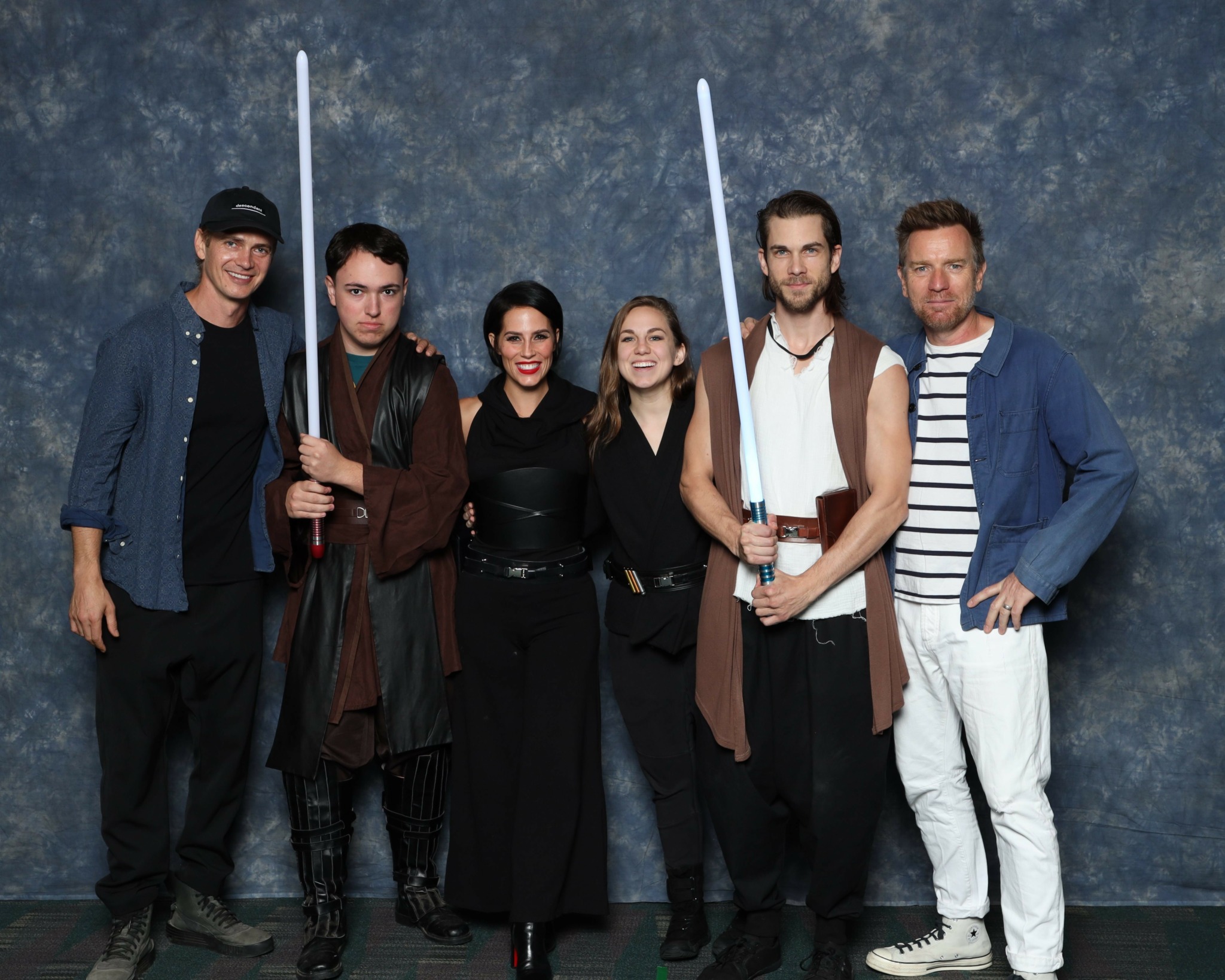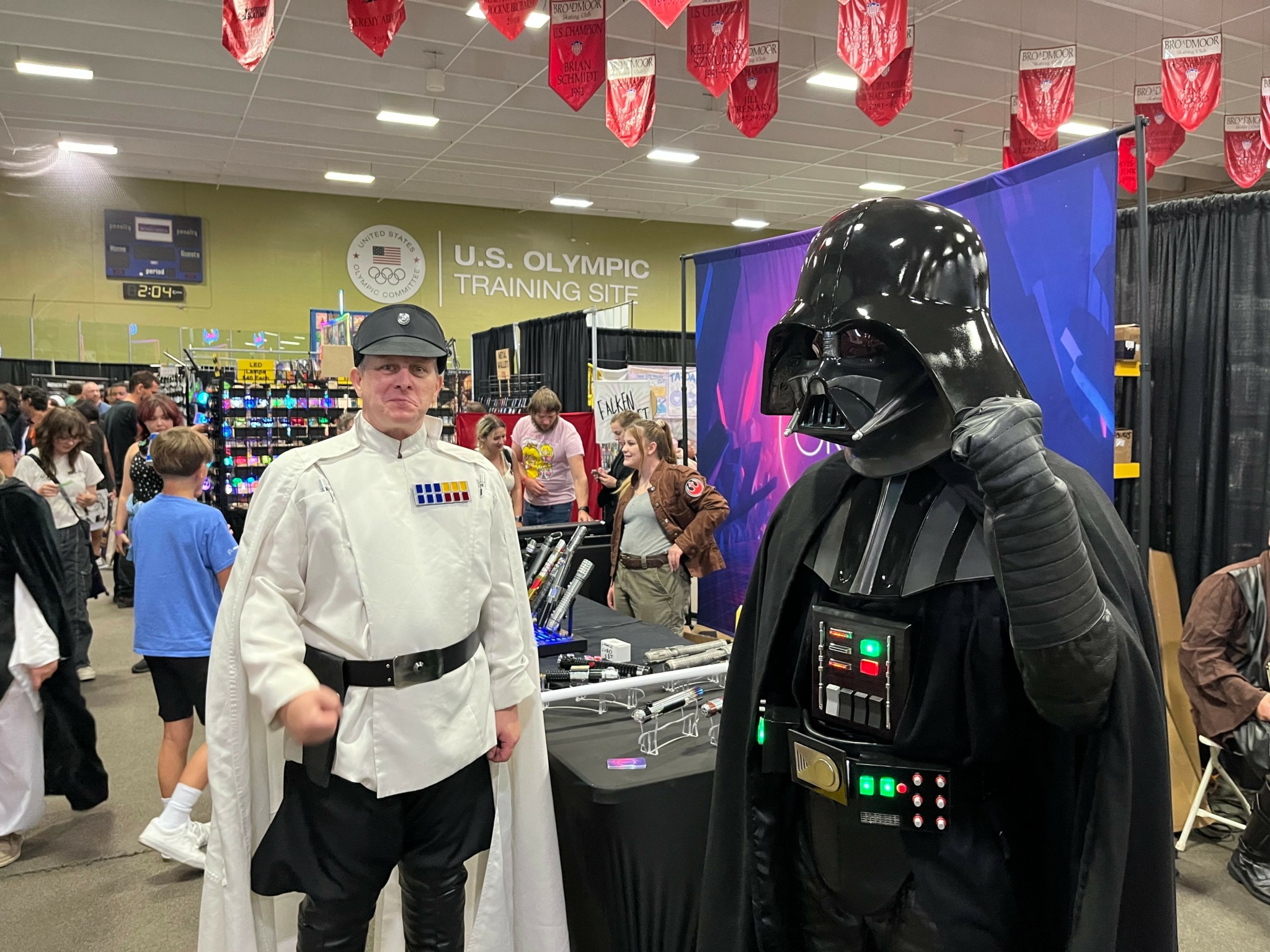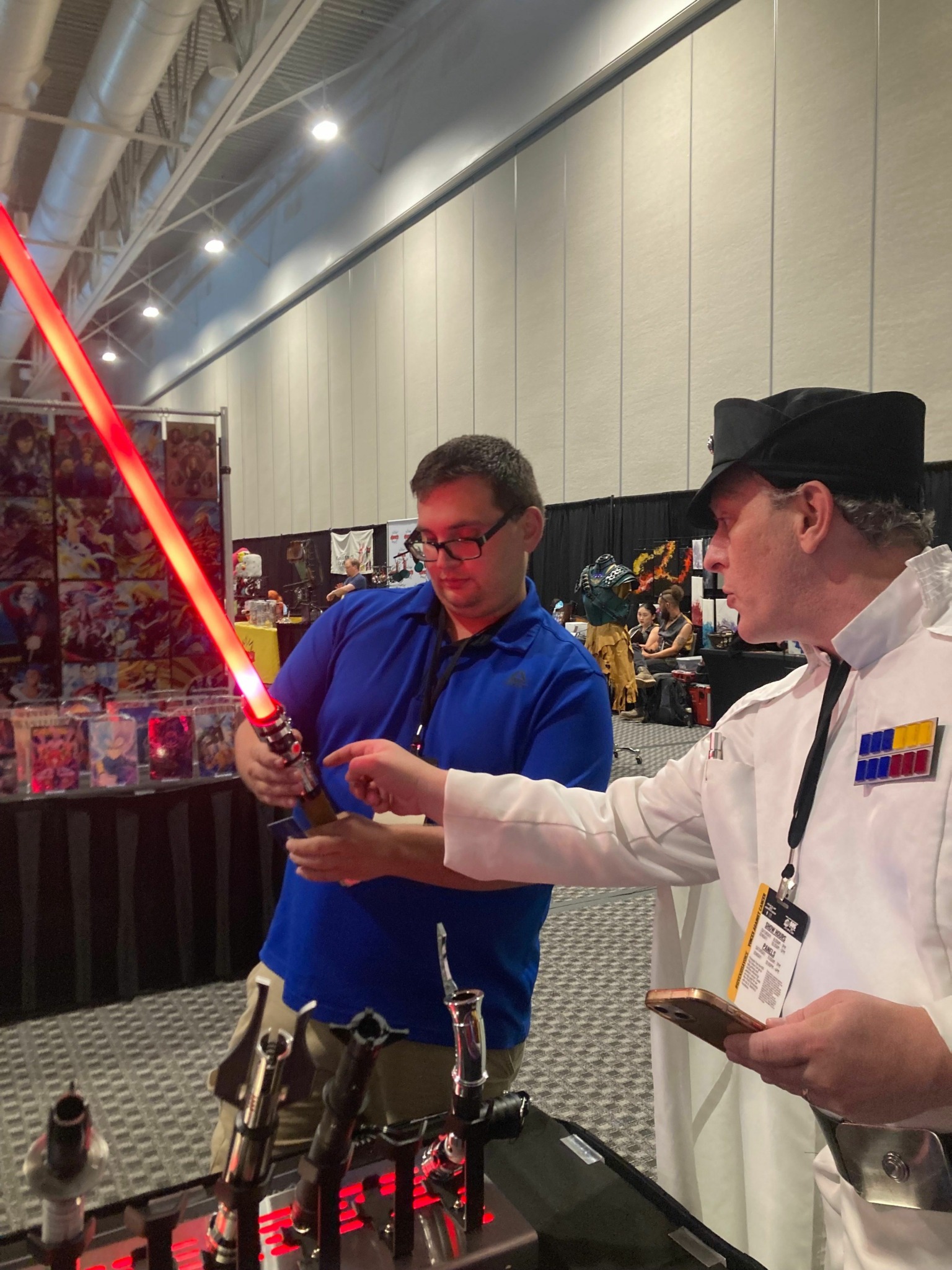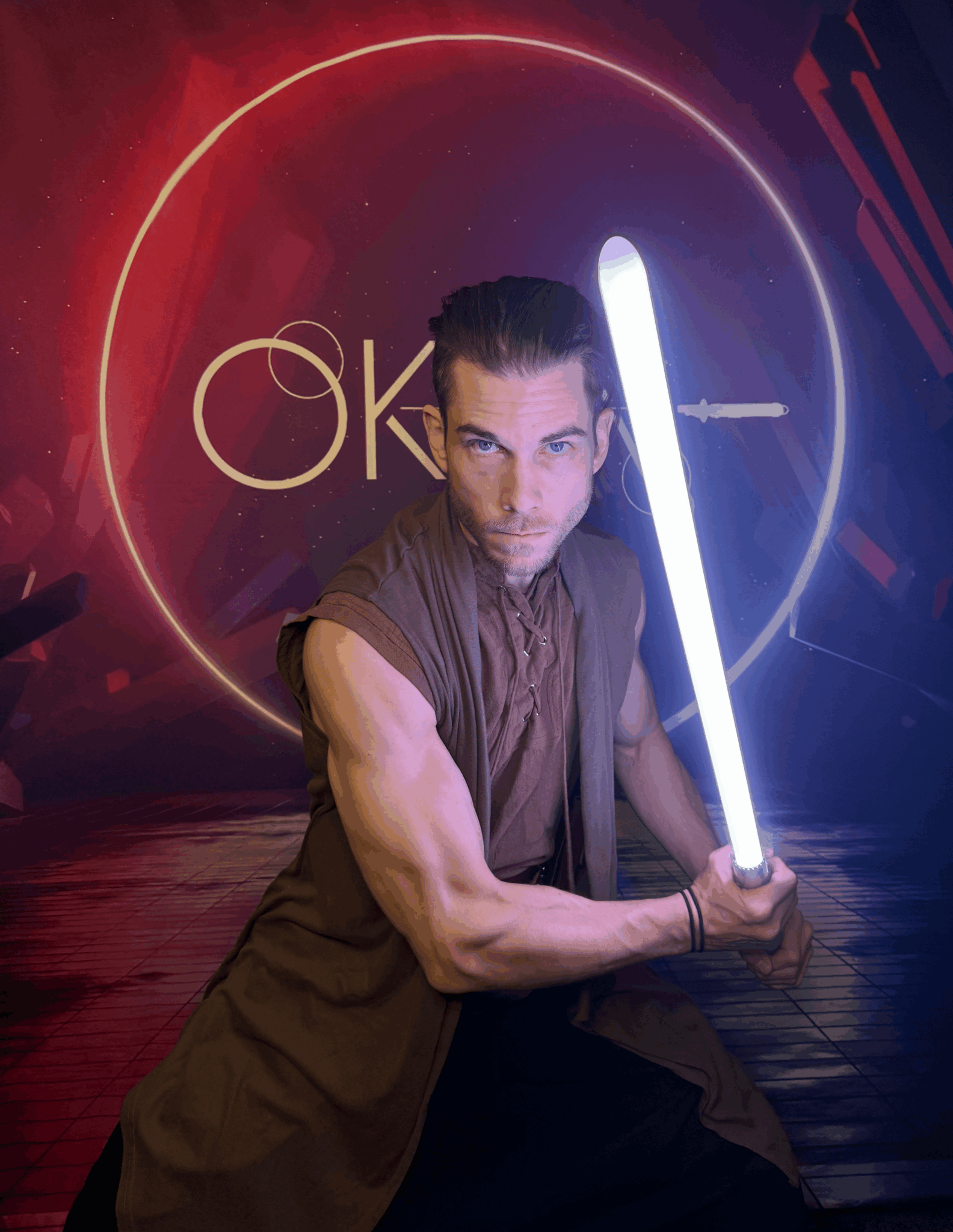We’re excited to introduce you to the always interesting and insightful Ty Burnett. We hope you’ll enjoy our conversation with Ty below.
Ty, looking forward to hearing all of your stories today. Coming up with the idea is so exciting, but then comes the hard part – executing. Too often the media ignores the execution part and goes from idea to success, skipping over the nitty, gritty details of executing in the early days. We think that’s a disservice both to the entrepreneurs who built something amazing as well as the public who isn’t getting a realistic picture of what it takes to succeed. So, we’d really appreciate if you could open up about your execution story – how did you go from idea to execution?
My elder brother introduced me to Star Wars when I was a child, and under his tutelage I came to know the story not just as my favorite movie but as a sort of philosophy. We played the piloting game “TIE FIGHTER” on our (Windows 3.1) home computer, completed playground obstacle courses as Jedi training, and converted dowel rods into –what else?– lightsabers, with which we choreographed complex, and I’m willing to say convincing, duels. My practice with the saber eventually brought me to particular skill and dexterity, and I likely spent hundreds of childhood hours in the simple meditative act of… spinning a stick around.
Years passed. The prequels were announced. Along with millions of others, I stood faithfully in the theater line awaiting my inheritance, my own generation of Star Wars cinema. “The Phantom Menace”, the first of these prequels, delivered the lightsaber duel which struck all Star Wars fans dumb with awe, and Hasbro and who-knows-what other companies rushed in to capitalize once again. You’ll remember the result. Cheap lightsaber replicas with “D” batteries and plastic telescopic blades populated shelves for years, and we bought them up with enthusiasm despite their shoddy quality.
Fast forward nearly two decades. My brother came to town over Christmas and brought with him a gift– a lightsaber resembling that which I had designed myself years before, only this saber was no Hasbro knockoff. Instead, I was surprised to find, the sound effects were convincing and the blade even more so. Beyond this, this new Jedi weapon was truly meant for dueling and could withstand even the most aggressive combat and choreography. My brother explained he had come upon similar products at a trade show, and wanted to start our own line of sabers with RGB color-changing blades and customizable effects and sounds.
What followed was a fairly straightforward if tedious process. Our sister and another friend joined the cause, and among the four of us, the setup was divided. Our sister, apt in the organizational and administrative ways of the Force, set about contacting a manufacturer and designing and ordering our first shipment of inventory. She already had experience with this process, and this proved to be a huge advantage without which our launch would have taken months longer. Meanwhile, we purchased a domain name and began construction of a website, and this was particularly tedious for the details involved: uploading a photo and description of our extensive inventory options, deciding upon and designing a color scheme and logo, writing site copy that fit with our brand and ethos. We ordered business cards in bulk, we had a custom banner made for our vendor booth, and we invested in products that complimented the Star Wars booth aesthetic that we wanted our brand to fit. All of these things, more or less, were simple enough to do but required a lot of web browsing, discussion, and overall initial investment of time and money. Hundreds of hours and thousands of dollars were spent before we sold a single product.
The goal was– and still is– to develop an online brand such that we could get our lightsabers to market at scale. But the internet is a big place, and many of our competitors established their presence years before we knew of the improved lightsaber technology. As such, we’ve done a lot of traveling to comic cons throughout the country in order to sell our wares and expose our brand to the masses. Our first show was actually not a comic con, but a municipal trade show in a small Texan town. With this first show, we came out with a small profit, and in the following months booked whatever comic con we could, submitting our brand information and investing in a booth spot. We then loaded up our inventory and traveled to places like South Dakota, Texas, Colorado Springs, and Los Angeles to get our name out there and meet with other Star Wars fans. Over the course of many months, we adapted and improved our booth setup. We’ve learned to modify our approach to things like product storage and spare parts, and we’ve gradually made things more efficient as we’ve gained experience with the entire comic con process.
Some of these events were great for our business, and some failed to meet our expectations. A lot of factors work to determine the success of an event: the size of the comic con, the number of competitors, the presence or absence of Star Wars celebrities in particular, and limitations on our on-hand inventory. We put a lot of thought into what inventory to make and bring with us since our catalogue is extensive but our hauling space and booth storage are finite. This calculated gamble requires that we optimize our inventory investment by bringing the kind and quantity of product we think will sell best given the event. Anything we don’t sell will accrue debt interest until our next event, so we’ve learned to improve equilibrium between maximal variety and imprudent surplus.
Given my ability with a lightsaber, we decided I would act as the face of the company, and it was my specific duty to manage and produce content on social media. I soon discovered how much time and work this required. I have resumed my lightsaber training as this helps attract attention to the brand, and especially on TikTok (RIP), we’ve gotten a lot of positive attention from other lightsaber “flow artists”. While there is much more work to do by way of social media content, it has been encouraging to see that this particular community is alive and growing. Along the way, we’ve met some interesting and helpful people, and some of these encounters may eventually lead to further business opportunities.
.

Ty, love having you share your insights with us. Before we ask you more questions, maybe you can take a moment to introduce yourself to our readers who might have missed our earlier conversations?
OKEN SABER ARMORY was founded by three siblings enthusiastic about Star Wars. Our love of Star Wars and especially of the Sith/Jedi narrative philosophies goes back decades, and it’s with this appreciation that we decided to start a business centered on our shared interest.
The lightsaber is arguably the most iconic weapon in all of cinema, a marker of the power and discipline of its wielder, and plainly awesome. Since the release of the first Star Wars film, one or another lightsaber-esque product has been available to the masses, but none so true to form or as realistic and durable as ours.
Our lightsabers come in hundreds of styles, including perfect replicas of not only all the major Star Wars villains and heroes, but also those from extended lore, including characters like Mara Jade or Darth Revan. Our sabers can change sound effects and blade colors, and are durable enough that even aggressive dueling and choreography are game. The polycarbon blades are also detachable, allowing the hilt to be a great display piece for the Star Wars collector.
Our young brand aims not only to get these amazing sabers into the hands of fellow fans, but also to help the community of fans and cosplayers alike with instructionals on how to wield a lightsaber. Our company’s namesake founder, Tal-Ki Oken, has been a practitioner of sabercraft for years and has recently joined the online lightsaber “flow artist” community, wherein the beautiful skill and meditative art of saber work is showcased by a growing number of lightsaber enthusiasts. Apart from our competitive product and prices, we aim to make our mark on the art of the lightsaber, joining the ranks of Hollywood choreographers like Michelle C. Smith and otherwise helping cosplayers develop the skills to complement their Sith/Jedi aesthetic.

Any stories or insights that might help us understand how you’ve built such a strong reputation?
Our enterprise is still relatively young and we’re still building our reputation, but I’m pleased and proud of how well our team has performed in the area of customer service. It’s a relief to know that when an issue arises, it will be handled obligingly and with courteous professionalism, and we’ve received many comments to the effect of “we almost bought from your competitor, but we like you guys more”.
A good example is the instance in which, by way of customer error, his recently purchased product developed an issue for which additional parts would now be needed. Instead of sending him away with the now defunct product, we exchanged it for a brand new one, even though this meant we now had one less (particularly popular) product to sell at the event we were attending. The customer was pleasantly surprised at this gesture, and this kind of service is the sort to eventually build a good reputation.
As further example, we once had a difficult customer who was corresponding with a team member about a technical issue. I wasn’t handling that particular problem but could see the e-mail exchange from our shared account, and was impressed by how our team member communicated throughout, even when the customer resorted to overt snark.
Though it’s no secret, good customer service is key.

Any advice for managing a team?
Our team is small, consisting of only four people. On the one hand, the fact that three of us are siblings clearly makes for a default rapport that exceeds what it may otherwise be. With that offered as disclaimer, I can see factors beyond that dynamic that would make us a good team even in its absence.
First, competence in our diverse skills. Each of us has trust in the others’ ability to perform their functions effectively, and these skills vary among us, ranging from software engineering & 3D design, administrative & organizational savvy, R&D aptitude and overall innovative prowess, salesmanship, creative social media vision, and so on. Beyond being able to trust one another’s integrity, we can trust in everyone’s ability to perform, and we enjoy a kind of four-way Venn diagram of labor division which is conducive to productivity and preempts friction in the team. So, if I were to distill this into a bit of advice, I would say: Having a competent team makes everyone feel like everyone else is pulling their weight. Having confidence in others’ abilities avoids resentment and fosters mutual respect.
Second, and relatedly, while we enjoy the benefits of diverse personalities, we all understand that hiccups and complications will occur, so when they do, none of us reacts in a way that makes it worse. This isn’t to say that frustrations never come up, but that everyone’s good about taking them in stride and not dwelling upon them. This fact is aided by item #1 in that, though a team member may make some mistake or suffer some mishap, the others understand that the team is nevertheless far better off for their presence despite any incidental snafus.
Contact Info:
- Website: https://www.okenarmory.com
- Instagram: @okensaberarmory
- Youtube: okensaberarmory






